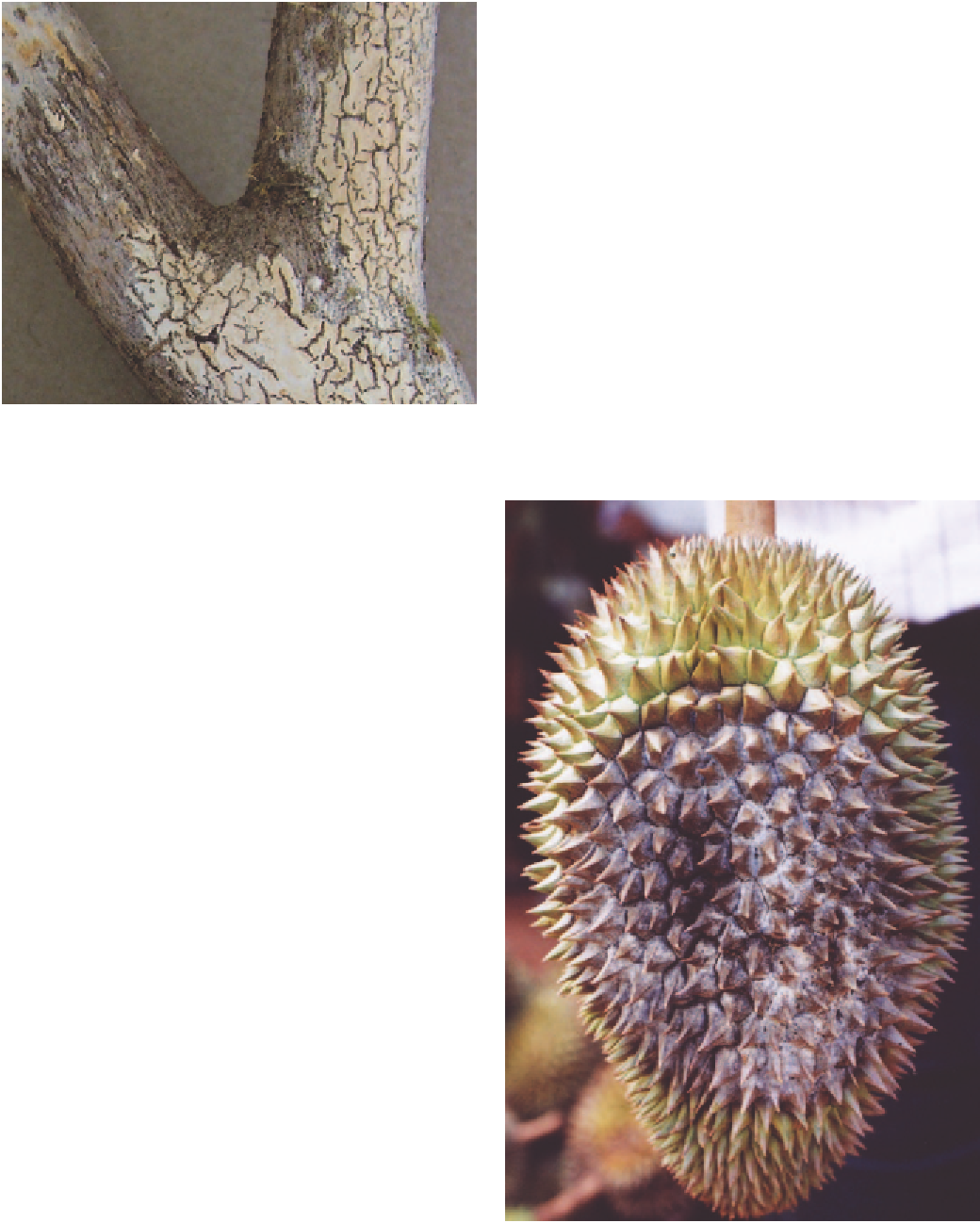Agriculture Reference
In-Depth Information
DURIAN
(
Durio zibethinus
)
PHYTOPHTHORA TRUNK CANKER,
LEAF BLIGHT, DIEBACK AND FRUIT ROT
Cause
The oomycete
Phytophthora palmivora
.
Symptoms
All parts of the durian tree are attacked by
P. palmivora
:
the trunk, twigs, branches, fruit, leaves, f lowers and the
underground portion of the stem and roots. Trunk
cankers appear as wet lesions with bark cracking,
particularly on branch crotches and root buttresses. Gum
may ooze from the surface of affected areas. Wood
beneath the lesion is discoloured with a well-defined
Fig 19.6 Fungal growth of pink disease on a limb.
Symptoms
Patches of pale pink fungal growth develop along twigs
and limbs. The bark on infected limbs will eventually
crack and exude gum. Severely affected limbs wilt
and die.
Source of infection and spread
The fungus infects many woody plants besides cacao. It is
most common in humid, tropical areas but also occurs
in subtropical, coastal areas, particularly in areas adjacent
to rainforest.
Importance
The disease is not common but can appear during wet
weather, especially in high-density orchards or in shaded,
lower lying sections of orchards adjacent to forested areas,
gullies or windbreaks.
Management
•
Prune out infected twigs when the disease is found.
Apply recommended fungicides.
•
Further information
G u e s t D ( 2 0 0 7 ) B l a c k p o d : d i v e r s e p a t h o g e n s w i t h
a global impact on cocoa yield.
Phytopathology
97
, 1650 - 1653.
P l o e t z R C ( 2 0 0 7 ) C a c a o d i s e a s e s : i m p o r t a n t t h r e a t s t o
chocolate production worldwide.
Phytopathology
97
,
1 6 3 4 - 1 6 3 9 .
Fig 19.7
Phytophthora palmivora
infection on durian fruit.












